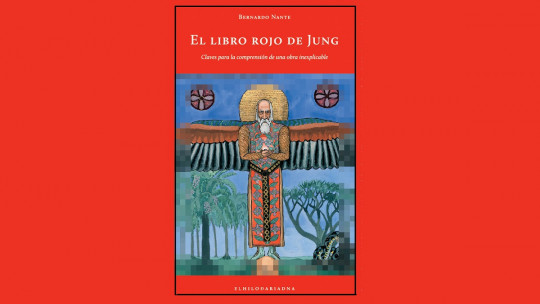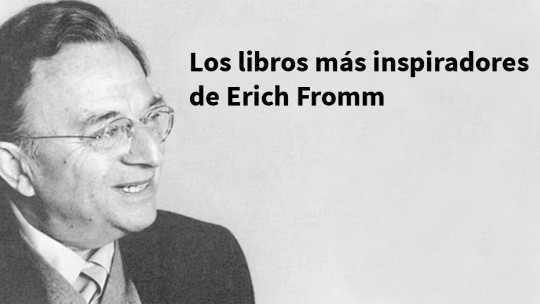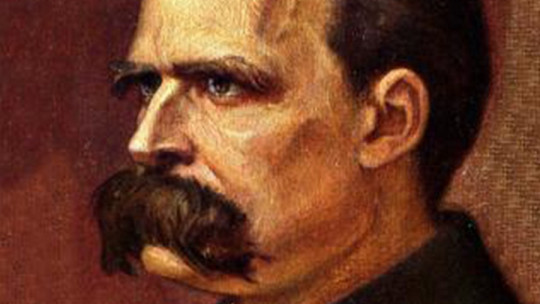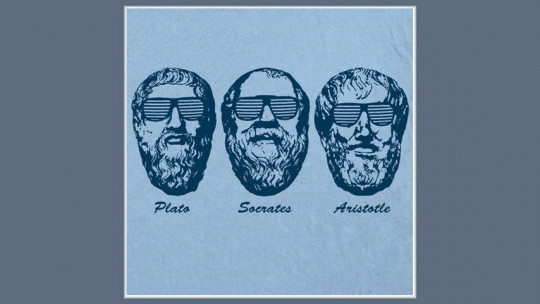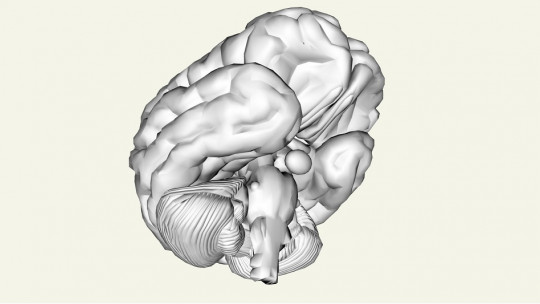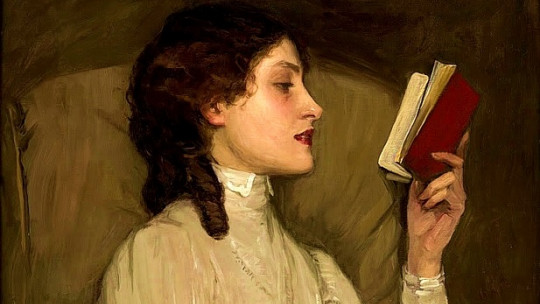Throughout the history of psychology, numerous authors have developed a large number of explanatory theories of the human mind and the disorders and problems that afflict it.
From different schools and currents of thought, different students of the psyche have focused their attention on specific aspects of the mind, creating a large number of concepts and ways of understanding our being.
The postulates of psychoanalysis
One of the best known at a popular level is psychoanalysis which focuses on unconscious drives and forces to explain each person’s ways of facing reality, including those of subjects with mental disorders.
Although the most popular and one of the most prolific authors of the psychoanalytic movement is its founder, Sigmund Freud, he is not the only author with great importance in the history of psychodynamic psychology. In fact, other conceptualizations of the psyche have emerged from it that question some aspects of the original theory, creating other schools.
One of them, which separates itself from the most orthodox psychoanalytic tradition, is that of Carl Gustav Jung, from whose work we are going to make a selection of his twenty best books below.
Jung and analytical psychology
Considered one of the neo-Freudians, a group whose thinking partially diverged from the Freudian conception of the psyche, Carl Gustav Jung is the founder of analytical psychology In this way of understanding the human mind, it was psychic energy and not only the libidinal drive that moved behavior, leaving the sexual aspect in a relatively secondary role.
It also differs from Freudian theory by considering that there is not only an individual unconscious, but rather proposes the existence of a partially inherited collective one. In other words, it does not focus only on the psychology of the individual but also on that of the community. The analysis of both types of unconscious and the structure of the personality based on basic processes are a fundamental part of analytical psychology.
Also known for a more spiritual conception of the human being, Jung studied extensively the symbolism of acts and feelings, both expressed and inhibited We owe Jung concepts such as complexes and archetypes, elements that contribute to the creation of one’s own identity and individuation and make us who we are.
Also of great interest is the analysis of dreams and spontaneous creations, which for this author emerge as a method of compensation and clarification of consciousness.
Twenty books by Carl Gustav Jung
Although not as prolific as other authors, Jung’s work is extensive and one of the most influential within the psychodynamic current throughout the 20th century
Let’s see below some of the main works of this author.
1. The red book
Originally called Liber Novus, This book is a work that took Jung around 15 years to complete In it you can see the bases of most of his work, being considered by the author himself as the apex of his subsequent developments.
Some of the themes that can begin to be observed are the existence of the most relevant archetypes or the connection between the structure of the mind and culture. Jung developed the Red Book through self-exploration and confrontation with his own unconscious, using the technique of active imagination. As a curiosity, it should be noted that despite being a work of great importance, it would not be known until many years after his death, well into the year 2009, due to the initial opposition of his heirs to its publication.

2. Archetypes and collective unconscious
This book deals with one of the most relevant themes in Jung’s work: the idea of a collective unconscious In it we also observe one of the main concepts created by Jung, the archetype as a psychic expression of the structures inherited from our peers, this being the basis on which this important work is based.

3. Psychological types
In this work Jung explores the different types of personality based on three basic processes: the libidinal (which marks whether we are introverted or extroverted), the rational (which tells us whether we are reflective or sensitive) and the irrational (which shows whether we are intuitive perceptive). These processes mark us both conscious and unconscious attitudes, causing a certain way of being.

4. Man and his symbols
Dreams and symbolic elements such as culture and art They are elements of great importance for the creator of analytical psychology. Inside this volume we can see how the author, based on the analysis of dreams, proposes an explanation of the deep meaning of our dream projections, art, myths and even our actions in everyday life.
It is the last work that the author wrote before his death, and was intended to be a way to bring Jung’s theoretical conceptions of symbolism closer to the general public.

5. Complexes and the unconscious
Another of the great concepts introduced by Jung was that of complex trapped emotional experiences that cannot be consciously recognized and remain trapped in the personal unconscious, generally coming from repressed experiences that involve emotional shocks.
This work explores the unconscious or shadow of the person, and its representation in various facets such as dreams.

6. Aion, contributions to the symbolism of the self
A work focused on the conception of the self or selbstthe psychic totality whose obtaining is the objective of the individuation process. This book uses the symbols of the Christian religion making Christ an equivalent of selfhood, and of alchemy to explain what it is and how we structure our selfhood, integrating the various concepts and archetypes that lead us to obtaining individuality.
- Buy it here.

7. Conflicts of the child’s soul
Childhood and youth are fundamental periods of development in the configuration of the human being The existence of conflicts and serious harm in these stages can cause serious harm that can affect the individual throughout the rest of his or her life.
Throughout this volume Jung refers to this fact, still expressing a certain Freudian influence and analyzing the effects of childhood psychosexual development and the importance of parents and the environment.
- Buy it here.

8. Psychology and education
Thematically linked to the previous work, in this volume Jung continues to worry about childhood and human development In this case the author links culture and symbology to the construction of the psyche, dealing with issues specific to pedagogy and educational psychology.
- Buy it here.

9. The psychology of transference
The concept of transference is a constant in the psychoanalytic or psychodynamic current Understood as the process through which the patient projects his feelings, emotions and lived experiences onto the therapist, the transference relationship is a complicated and essential part of the therapeutic relationship between patient and professional (although therapy for this author must be based on collaboration between patient and therapist and not in transference processes).
In this book, Jung reflects the complexity of transference processes and his observations in this regard, making an obvious parallel with the practice of alchemy.
- Buy it here.

10. Psychogenesis of mental illnesses
Much of Carl Gustav Jung’s early works deal with mental disorders In this case, throughout the book in question we are going to observe the author’s conclusions and the therapeutic practices used during the treatment of subjects with mental disorders.
Topics such as the curability of disorders, the way of understanding the processes that produce pathology or the effect of the unconscious in these cases are some of the themes that are reflected throughout the essays present in this collection.
- You can easily buy it here.

11. Psychic energy and essence of sleep
Analytical or depth psychology relies heavily on the idea of psychic energy as the basis of the psyche. and human performance. Understanding this energy as the psychic and emotional force that governs us, in this book we proceed to visualize in a theoretical way the bases of behavior and the transformations that are carried out of this instinctual energy (such as dreams or complexes). ). Also in this work he relates the unconscious with the instinctive and spirituality.
- Buy it here.
12. Formations of the unconscious
In this work Jung delves into those formations through which the unconscious is expressed and channeled , such as literature, poetry or artistic representation. The symbolic elements of each element are discussed, such as the identification and transformation of itself and of the work itself.
- You can purchase it through this link.
13. Two writings on analytical psychology
This volume brings together two of the first essays by the creator of analytical psychology in which reference is made to the relationship maintained between the two types of unconscious, individual and collective, as well as between these and the structured set of the self.
- Buy it at this link.
14. Writings on spirituality and transcendence
A strongly spiritual man, religion is an important element for Jung and relatively frequent throughout his work. Regardless of the specific religious confession in question, religious belief and spirituality are part of culture and the way of seeing the world and acting in it. In this book the author gives a dissertation on spirituality and transcendence, trying to understand how the mind is in search of a meaning for reality and being.
- Buy it from this link.
15. The practice of psychotherapy
For Jung, the individual who suffers from a disorder suffers from it because of the inhibition of his unconscious The main objective of psychotherapy, therefore, is to facilitate the redirection of the individuation process based on the dialogue between conscious and unconscious. In this compilation work, the writings included focus especially on the conception of psychotherapy for Jung, its context, collaboration with the patient (who must actively collaborate in the therapy) and the way it is carried out.
- Purchasable here.
16. Synchronicity as a principle of acausal relations
Synchronicity is called the coincidence of two phenomena linked to each other in a way that, although their connection makes sense, it cannot be causal. In other words, one situation is not a consequence of the other but their connection is not limited to coinciding in time. This fact, which the author relates to intuition, is explored in the work at hand.
- You can read it here.
17. Response to Job
Using the biblical account of the Book of Job, Jung establishes an interesting controversy between the emotional and the rational , the person and the shadow. In this work we can observe the suffering caused by passions and emotions, which are unbridled by the attempt to make them rational. This is an interesting reflection of the psychology of the unconscious.
- Buy it here.
18. Civilization in transition
This work includes several texts by the author in which we can contemplate the process of social transformation typical of the time, with varied sociological themes such as the role of psychology in the time, the role of women, love and catastrophe, the conceptions of different peoples or the concepts of good and evil according to analytical psychology.
It is worth taking into account the historical context in which the work was published, from the end of the First World War until shortly before the construction of the Berlin Wall (through the Roaring Twenties, the Great Depression and the Second World War, among others). ).
- You can purchase it here.
19. Memories, dreams, thoughts
A work made in collaboration with Aniela Jaffé , in this volume Jung reveals part of his autobiography, exploring the author’s childhood and personal life. He is not limited only to making a biography of these aspects, but also includes his work as a researcher of the human mind, his theories and hypotheses about the unconscious, the role of symbolism and phylogenetic history, the therapeutic relationship and psychotherapy. .
It is therefore a book that helps to understand the figure of the author, his history and his deepest thoughts regarding the human psyche and the role of the psychologist.
- Buy it here.
20. Metamorphosis and symbols of libido
Although other volumes better reflect Jung’s ideas and theories, this work has been considered within the present list because we are dealing with the work that began the first divergences that culminated in Jung’s separation from Freud, due to the secondary conception of sexual aspects and the rejection of the Oedipus complex (in the second part) for the creator of depth psychology.
21. Freud and psychoanalysis
This set of writings by Carl Jung contains texts that belong to the period in which psychoanalysis was finally consolidated in Europe, especially during the first two decades of the 20th century. Here are the principles of Freudian theory specific aspects about how it was usually applied, and the criticisms that Jung directed at what he understood to be a suffocating discipline that considered the religious and spiritual dimension of the human being in a too rigid way.
- If you are interested, you can get it here.



